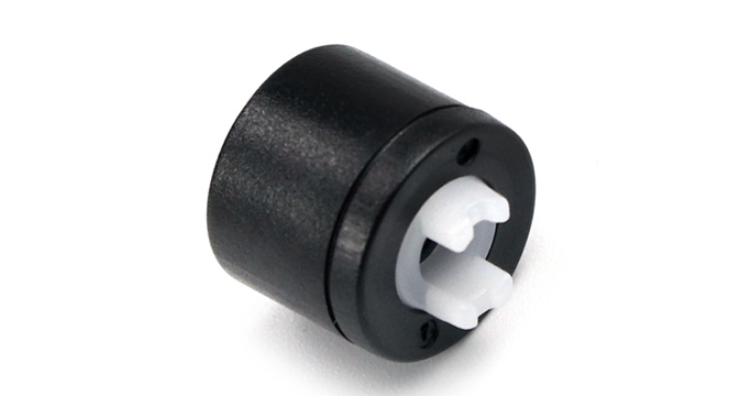How Do Linear Hydraulic Dampers Work in Household Appliances?
Linear hydraulic dampers serve an essential purpose in household appliances by ensuring that the movements of various mechanisms are not only quiet but also smooth and secure. This helps to minimize impacts, thereby avoiding damage and reducing noise levels, ultimately extending the lifespan of both mechanical and electrical components.
Overview
In the contemporary household setting, the silent and smooth operation of appliances is crucial for an enhanced user experience. Numerous household devices, including washing machines, vacuum cleaners, and refrigerators, frequently undergo movements that open and close various parts. Here, linear hydraulic dampers significantly contribute by absorbing shocks generated from these repetitive actions, thereby improving the performance and durability of appliances. This article delves into how these dampers function, their advantages, and their applications in everyday household items.
Understanding Linear Hydraulic Dampers
Definition and Components
Linear hydraulic dampers are specialized mechanical devices that utilize fluid dynamics to regulate motion and absorb shocks. Typically, these dampers consist of a cylinder filled with silicone oil, along with a piston and a connecting rod. As the piston navigates through the oil, it generates resistance, effectively dampening any motion.
Operational Mechanism
When external force interacts with the damper, the piston shifts within the cylinder, causing the silicone oil to flow through minute orifices found in the piston. This viscous flow creates resistance against the energy produced by the movement, thereby reducing both the speed and intensity of that motion. As a result, the operation is carried out smoothly and in a controlled manner, leading to a stable and tranquil appliance performance.
Uses in Household Appliances
Washing Machines
Washing machines encounter considerable vibrations during their spin cycles. To counteract this, linear dampers are integrated to absorb the resulting vibrations, effectively minimizing excessive movements and noise. This not only enhances the machine's longevity but also ensures a quieter laundry process.
Refrigerators and Freezers
Refrigerator and freezer doors are constantly opened and closed. Linear dampers guarantee that these doors close softly, preventing slamming motions and reducing wear on hinges and seals. This mechanism helps sustain appliance efficiency while minimizing noise output.
Vacuum Cleaners
Vacuum cleaners, especially robotic versions, utilize linear dampers to regulate the movement of their internal components. These dampers facilitate the controlled opening and closing of compartments and ensure smooth navigation across different surfaces, thereby enhancing overall performance and durability.
Advantages of Linear Hydraulic Dampers
Enhanced User Experience
Through the provision of smooth and quiet appliance operations, linear dampers elevate the user experience. The gentle closure of drawers and doors, coupled with reduced vibrations and noise, results in a more comfortable living environment.
Increased Durability
By effectively absorbing shocks and controlling movements, linear dampers mitigate mechanical stress on appliance parts. This leads to fewer repairs and replacements, ultimately lengthening the appliances' operational lifespan.
Energy Efficiency
In refrigeration units, linear dampers contribute to maintaining a firm seal when doors close gently. This not only minimizes energy loss but also enhances overall efficiency, leading to lower energy costs and a reduced environmental impact.
Significance of Silicone Oil in Linear Dampers
Compression and Vibration Management
Silicone oil within linear dampers is notably effective in managing compression and vibrations. Its ability to maintain stable viscosity across a broad temperature spectrum ensures consistent functionality, making it a suitable choice for household appliances that operate under fluctuating conditions.
Smooth Movement and Controlled Deceleration
The distinctive characteristics of silicone oil allow for both smooth motion and controlled deceleration within linear dampers. This ensures that appliances operate quietly and efficiently, enhancing overall user satisfaction.
Growing Utilization in Household Appliances
Furniture Drawers and Lids
There is an increasing adoption of linear dampers in furniture drawers and lids to ensure soft and silent closure. This feature helps prevent damage to the furniture while also lowering noise levels, thereby fostering a tranquil home environment.
House Doors and Ovens
Beyond appliances, linear dampers are also utilized in house doors and ovens. They enable smooth and controlled opening and closing, thus enhancing both safety and user convenience.
Trash Cans and Electronic Appliances
Modern trash cans and various electronic devices benefit from the inclusion of linear dampers. These dampers ensure smooth functionality, thereby reducing noise and impact from frequent usage.
Final Thoughts
Linear hydraulic dampers are fundamental in improving the functionality and overall user experience in household device damping. By absorbing shocks and regulating movements, these dampers contribute to creating quieter, more efficient, and longer-lasting devices. As more manufacturers become aware of their advantages, the integration of linear dampers in household appliances continues to expand.
- 0


